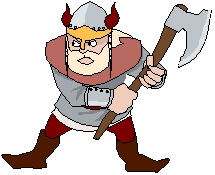

This article appeared in the July 2010 edition of the INNsight newsletter
Europe swings the pricing axe
Over the last few months there has been a wave of medicine price cutting in Europe that has almost turned into an epidemic and generics seem to have caught the disease as well. Many of the economies in the Euro zone are in deep trouble, cuts in state expenditure are necessary and the pharmaceutical industry is always a popular target.
 So the mad axe man has been let loose and has been taking a swing at prices of both branded products and generics resulting in some very painful cuts in some markets.
So the mad axe man has been let loose and has been taking a swing at prices of both branded products and generics resulting in some very painful cuts in some markets.
It all started in May when the Greek government announced that it was cutting prices of over 1500 medicines by up to 30%. Some companies such as Novo initially told the Greeks where to go and threatened to stop selling some products in that market. The Hellenic Association of Pharmaceutical Companies claimed that the cuts risked creating a shortage of medicines and is considering a legal challenge to the move.
One concern for some branded companies is that low prices could turn Greece back into a major source for parallel imports into other, higher priced EU markets. Figures from IMS in early 2010 showed that PIs accounted for no less than 61% of the value of the German market. Another concern is that several EU countries cross-reference each other’s drug prices and many refer to Greek prices as a component in the determination of their own local price levels.
However it is not only the Greeks who have taken the axe to prices – Spain, Italy, France and Germany have all done the same. And the cuts do not just affect high-priced brands but generics as well, so that the European generic world as a whole is starting to become very concerned about the viability of the industry.
Adding to the concerns is the increasing spread of generic tendering. The UK has used this system for supplies of generics to hospitals but the NHS has always insisted that it wants to balance low tender prices with a healthy generic industry. The practice has spread to the Netherlands and Germany, but there the focus seems to have narrowed to just the price aspect. The German trade association ProGenerika predicted a few years ago when the AOK Health Insurer first spoke of price negotiations and tenders that Germany would end up with “ the last of the Mohicans”. In other words they foresaw a large number of generic companies going out of business with a handful of giants being left to dominate the industry.
While it is often the case that trade associations will instinctively see the worst of any change in the business environment for their members, there is possibly a kernel of truth in this suggestion. I am aware of some companies that are considering leaving the Spanish market in view of the 30% cuts in reference prices that have been implemented there as well.
In an effort to make the bitter pill of generic price cuts more palatable, the Italian Health Minister Ferruccio Fazio told the Financial Times in an interview in early June that he wanted to offer incentives to doctors to prescribe generics so that they form a greater share of overall medicines’ consumption. But Italy still has a long way to go in matching other countries’ use of generics.
It is not beyond the bounds of possibility that some European countries will indeed end up with, say, only Teva, Sandoz, Mylan and a few others still selling generics and no small companies in the market. In such a scenario, what inventive will the remaining giants have to compete with each other on prices as the multitude of generic suppliers currently do?
In their approach to the generic industry, some governments seem to have forgotten the old fairy story of “The Goose That Laid the Golden Eggs”.
I quote here from Wikipedia.
- “A man and his wife had the good fortune to possess a goose which laid a golden egg every day. Lucky though they were, they soon began to think they were not getting rich fast enough, and, imagining the bird must be made of gold inside, they decided to kill it. Then, they thought, they could obtain the whole store of precious metal at once; however, upon cutting the goose open, they found its innards to be like that of any other goose.”
- Does anybody else notice the parallels?
If you have any questions or comments
on this article, please feel free to contact me.
peter@interpharm-consultancy.co.uk
www.interpharm-consultancy.co.uk

